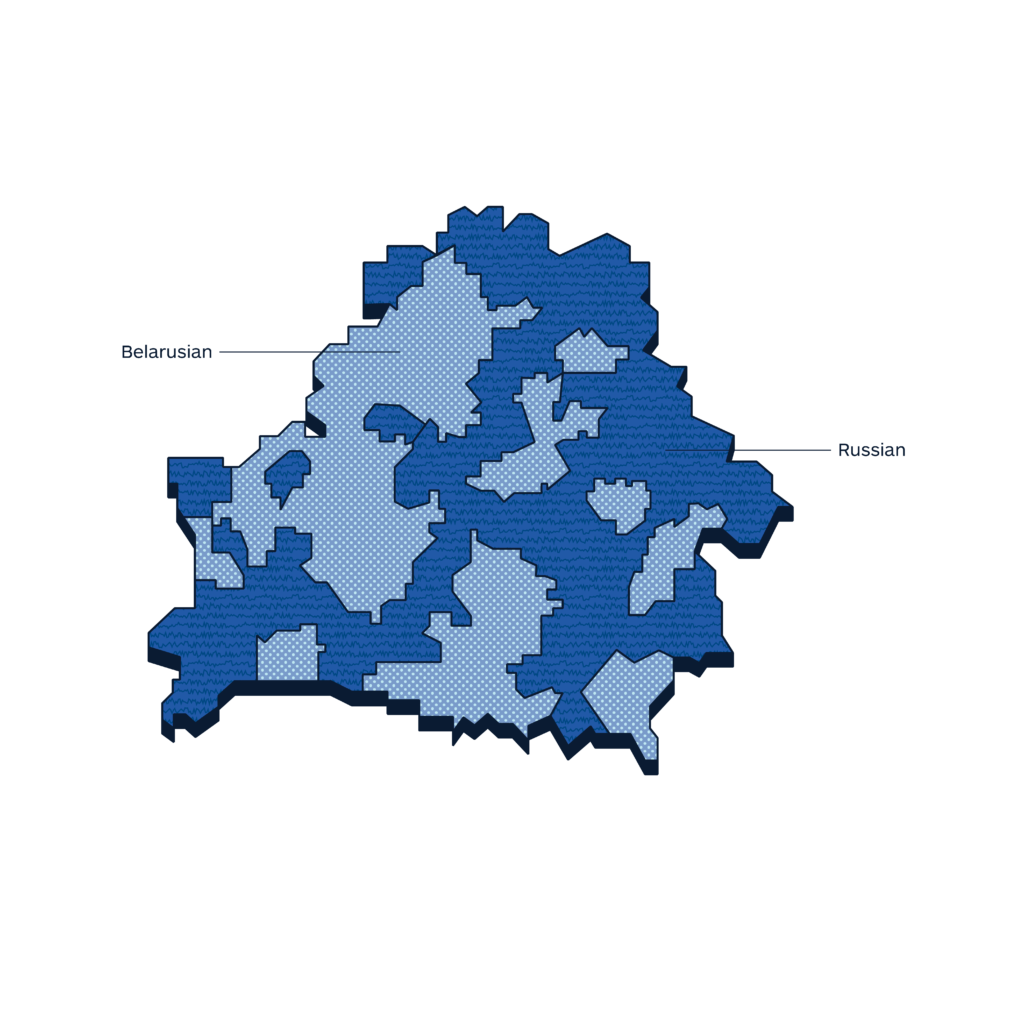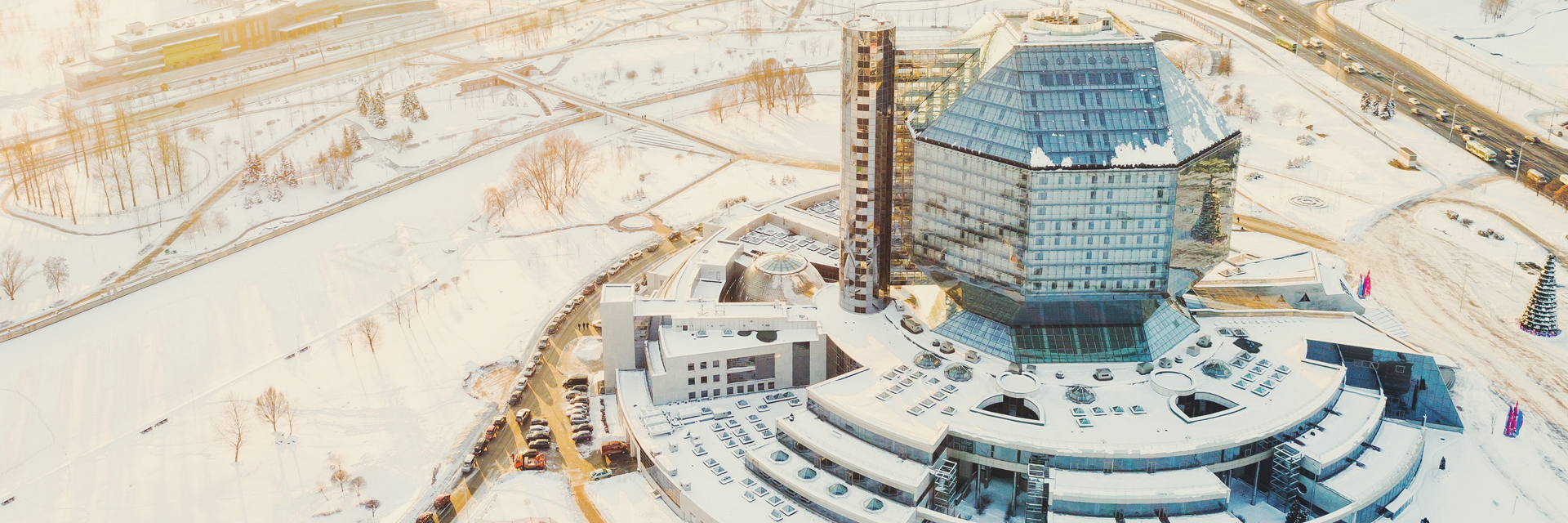Europe
To which language should you translate to localize in Belarus?
What we know from our community
There are two official languages in Belarus: Russian and Belarusian. The most used, however, is Russian. According to various studies, about 2/3 of the population speak Belarusian with varying degrees of skills. However, almost 60 % of this number don’t use the Belarusian at home. For this reason, this language is included by UNESCO into the “Atlas of the world’s languages in danger”.
Belarusian language is also used by part of population in some regions of Latvia, Lithuania, Poland, Russia and Ukraine. The Belarusian alphabet is based on the Cyrillic script with an apostrophe, the Latin character “i”, and a special one — “ў”. Also, unlike in Russian, it’s forbidden to replace the letter “ё” with “е” in writing.
An important component of the Belarusian are dialects and local accents. It is considered that the main dialects are North-Eastern, South-Western and Mid-Belarusian transitional.
Besides these dialects there is also so called Trasianka. It’s a mixture between folk-dialect of Belarusian and the Russian literary language. In some cases, the term “Trasianka” may have negative connotations, implying language mixture of low quality.
In general, Belarussian has two variants of the linguistic norm. The first one is the official orthography, whose rules were introduced after the 1933 language reform. The second one is Taraškievica, which was officially used in the period from 1918 to 1933.
The main differences between Taraškievica and the official orthography can be reduced to differences in orthography and phonetic transmission of lexical borrowings.
Nowadays Taraškievica is used by some part of the Belarusian-speaking intellectuals and by the Belarusian expatriate community. Those groups use it for the scientific literature, literature for children and for the musical works. In Taraškievica are also published some translations of foreign literature, movies and cartoons for the aforementioned community. This linguistic norm is gradually becoming popular among the younger generation. Mostly it’s used by the groups interested in art, culture, ethnic processes, and seeking to protect the environment and ensure equal rights for all social groups.
Introduction
Language
Official language
Belarusian 23% and Russian 70%
T-index
0.066%
T-Index ranks countries according to their potential for online sales.
Demography
Capital: Minsk
Currency: Belarusian ruble
Population: 9.34 million
Population density: 46/km2
Economy
GDP: 68.22 billion USD (2021)
GDP per capita: 7,303.7 USD (2021)
Exports: 28.1 billion USD (2020)
Statistics
Internet users: 85.1% penetration, 8.03 million
Unemployment rate: 4.1% (2020)
Urbanisation: 79.04% (2020)
Literacy: 99.8% (2018)
Conventions
Numbering system
Arabic numerals and comma as decimal separator
Date format: dd-mm-yyyy
Time: 24h time system
Country code: 00375
nnica//EF/Wikipedia; Demography data sources: IMF/Worldometers; Conventions data source: Wikipedia; Economy data sources: WTO/OEC/CIA/Esomar/Datareportal; Statistics data sources: Datareportal/WorldBank/UN/UNESCO/CEIC/IMF/Culturalatlas/Commisceoglobal
Facts and data
Economy
Imports
$32.1 billion (2020). Crude Petroleum ($3.87B), Petroleum Gas ($2.31B), Gold ($1.16B), Cars ($746M), and Packaged Medicaments ($558M), importing mostly from Russia ($15.8B), China ($3.07B), Poland ($1.71B), Germany ($1.6B), and Ukraine ($1.34B).
Financial inclusion factors (over 15 years of age)
• 81% have an account with a financial institution
• 19% have a credit card
• 46% make online purchases
Ease of doing business
It is very easy to conduct business (rated 74.3 out of 100) ranked 11th out of 44 countries in Europe ranked 49th out of 190 countries worldwide (2019, World Bank)
Exports
$28.1 billion (2020). Refined Petroleum ($2.78B), Potassic Fertilizers ($2.44B), Cheese ($1.06B), Delivery Trucks ($637M), and Tractors ($597M), exporting mostly to Russia ($12.8B), Ukraine ($3.15B), Poland ($1.26B), Lithuania ($1.05B), and Germany ($934M).
Main local online stores
Kufar.by, Aliexpress.com and Wildberries.by
Economic freedom
‘Mostly not free’ (53 out of 100) ranked 45th out of 45 European countries, ranked 135th out of 186 countries worldwide (2019, Heritage Foundation and Wall Street Journal)
Global Innovation Index
Ranked 36th out of 39 European countries, 62nd out of 132 worldwide.
The Global Innovation Index captures the innovation
ecosystem performance of 132 economies and tracks the most recent global innovation trends.
Economy data sources: WTO/OEC/CIA/Esomar/Datareportal
Service imports (2016)
Source: OEC
Service exports (2016)
Source: OEC
Most complex products by PCI
Product Complexity Index measures the knowledge intensity of a product by considering the knowledge intensity of its exporters
Source: OEC
Most Specialized Products by RCA Index
Specialisation is measured using Revealed Comparative Advantage, an index that takes the ratio between Belarus observed and expected exports in each product
Source: OEC
Export Opportunities by Relatedness
Specialisation is measured using Revealed Comparative Advantage, an index that takes the ratio between Belarus observed and expected exports in each product
Source: OEC

T-index
Reach most of the online purchasing power
T-Index ranks countries according to their potential for online sales. It estimates the market share of each country in relation to global e-commerce.
Try it nowMedia
Media language
Russian, Belarusan
Information channels
Belarus has been heavily criticised by rights bodies for suppressing free speech, muzzling the press and denying the opposition access to state media.
Freedom House says the government exercises almost total control over mainstream media and that the media law “secures a state monopoly over information about political, social, and economic affairs”. TV is the main news source. The nine national channels are state-controlled. Their main competitors are Russian networks. Most Russian bulletins are not rebroadcast live, allowing censors to remove content. Belsat, a Polish-funded satellite TV station, has struggled to obtain official registration with the Belarus authorities.
Newspapers owned by the state vastly outnumber those in private hands. Private titles include embattled pro-opposition paper Narodnaya Volya.
The internet is the fastest developing and freest medium, but lags behind TV in terms of reach. The web is used by the opposition to make its voice heard.
The government has expressed a clear intention to control the internet and has introduced legislation to this end. Opposition websites have been subject to filtering.
The press
Sovetskaya Belorussiya (Belarus Segodnya) – Russian-language, published by Presidential Administration; SB also publishes Respublika daily and Narodnya Hazeta daily
Zvyazda – Belarussian-language daily, run by National Assembly and Council of Ministers
BDG Delovaya Gazeta – private, business daily
Narodnaya Volya – private, pro-opposition, publishes twice a week
BelGazeta – private weekly
Svobodnyye Novosti Plyus – private weekly based daily
Television
Belarusian TV – state-run, operates flagship Belarus 1, entertainment network Belarus 2, culture network Belarus 3, sports channel Belarus 5, satellite station Belarus 24
Nationwide TV (ONT) – joint venture with Russia’s Channel One; state holds a majority stake
STV (Stolichnoye Televideniye) – state-run, rebroadcasts Russian REN TV
Belsat – exile TV based in Poland, via satellite and internet
Radio
Belarusian Radio – state-run, operates several networks including flagship Channel 1
Radio BA – commercial
Radio Mir – commercial
Radio Racja – exile station, based in Poland
Euroradio – exile station, based in Poland
News agency
Belta – state-owned, English-language pages
Belapan – private, English-language pages
Media data source: BBC
Internet Data
Internet users
85.1% penetration, 8.03 million
Share of web traffic by device
42.04% mobile phones, 57.05% computers (laptops and desktops), 0.91% tablet devices, others 0.01%
Median speed of mobile Internet connection
10.33 Mbps
Median speed of fixed Internet connection
48.39 Mbps
Mobile connection as a percentage of total population: 123.3%
Percentage of mobile connections that are broadband (3G-5G): 76.4%
Most popular web search engines
Google (76.76%), Yandex Ru (20.95%), Mail.ru (1.72%), Bing (0.22%), DuckduckGo (0.15%), Yahoo (0.15%)
Most used social media
Pinterest (29.04%), Twitter (21.67%), Instagram (18.34%), VKontakte (11.56%), Facebook (9.81%), YouTube (7.13%)
Internet data sources: Datareportal/Statcounter
Social statistics
Life expectancy
74 yrs (2020)
Average age of the population
40.3 yrs (2020)
Healthcare expenditure
5.86% of GDP (2019)
Social statistics sources: WorldBank/UN/UNESCO/CEIC/IMF
The Data Factbook is a work in progress project. Our community is helping us to fill it up always with new and updated data. Your contribution is precious. If you want to help us, please write your advices at imminent@translated.com
Languages research
Languages spoken in Belarus

Legend
-
Belarusian
-
Russian
The geographical distribution of languages that you will find in the maps published in this section is a work in progress. Our community is helping us to fill it up with always new and updated data. Your contribution is precious. If you want to help us, please write to imminent.factbook@translated.com
Photo credit: Irina Iriser, Unsplash
